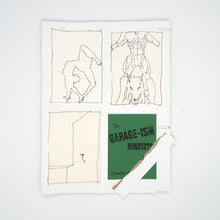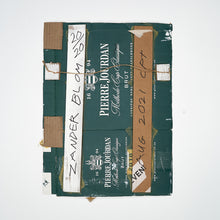The Garage-ism Starter Pack offers a succinct overview of Zander Blom’s idiosyncratic 'ism' as expressed in three concise sketches and a riso-printed manifesto. 'Garage-ism' – as title, word and concept – was central to Blom’s 2020-21 exhibition at Stevenson, which extended the artist's methodology of artmaking, championing imperfection, rejection, and excess.
Collected in the manifesto under subheadings like 'Garage-ism in Practice' and 'Notes from the Studio', Blom explicates his efforts as “narrowing the gap between mind and hand.” In his own words:
“Garage-ism is an approach to painting in which the aim is to make works that look like they could have emerged from a garage; works that appear to have lived and spent time behind boxes and stacks of old furniture. It’s not faux garage, it’s not about sticking cobwebs or dust onto canvas, and it’s not about nostalgia. Nor is it about paintings being made in a garage. It’s about working in a mental space where the desired destination for your efforts is neither the trash heap nor the museum. It’s about cultivating paintings that seem to have no desire to grace a pristine gallery wall, or even reside above a couch in a lounge. It’s about aiming to make work that is only really fit to live in that nether space: the garage. In this sense Garage-ism is a way of tricking yourself into giving up on superficial ambition in painting without descending into depression and apathy. The aim is to strip away the layers of external motivators, to reject the clamour of hollow voices in your head and move towards your own essential nature. In a way it is about not aiming at anything at all, but since that is an unproductive proposition, Garage-ism is useful as a kind of proxy for the void. It functions as an anchor with a very slack tether – a simple idea that allows you to move around freely, without drifting off and getting lost in space.”
48 x 39 cm | Paper, cardboard, glue, ink, PVA, string, graphite, staples, booklet | edition of 20
Zander Blom (b. 1982) explores different configurations of line, shape, and form in his paintings, drawings and photographs of abstract assemblages. Mining the imagery of modernist abstraction, Blom considers the history of painting as expressed in the present as a persistent formal challenge. “I look at what I do today as a kind of science of the picture plane,” he says. “I’m perpetually trying to solve new problems, and creating new problems to try and solve.”



